Biotix is a competitive, filler-length game (20-30 minutes) for 2-5 players, designed by Zachary Huff and published by Smirk and Dagger Games
When a Smirk and Dagger hits the table, you generally know exactly what you are getting – lots of backstabbery, facestabbery… any kind of stabbery you like. Whether you engage in social deduction (J’accuse!), card drafting (Nevermore), or “jump the line” player powers in a dungeon adventure (Cutthroat Caverns), a Smirk and Dagger game will almost always allow you to stick it in your friend’s face and (hopefully) laugh about it afterwards.
In this respect, Biotix falls squarely into Smirk and Dagger’s wheelhouse. Is there anything new here to distinguish Biotix from other Smirk and Dagger games? As a filler, is this game a good way to fill the time between plays of larger games?
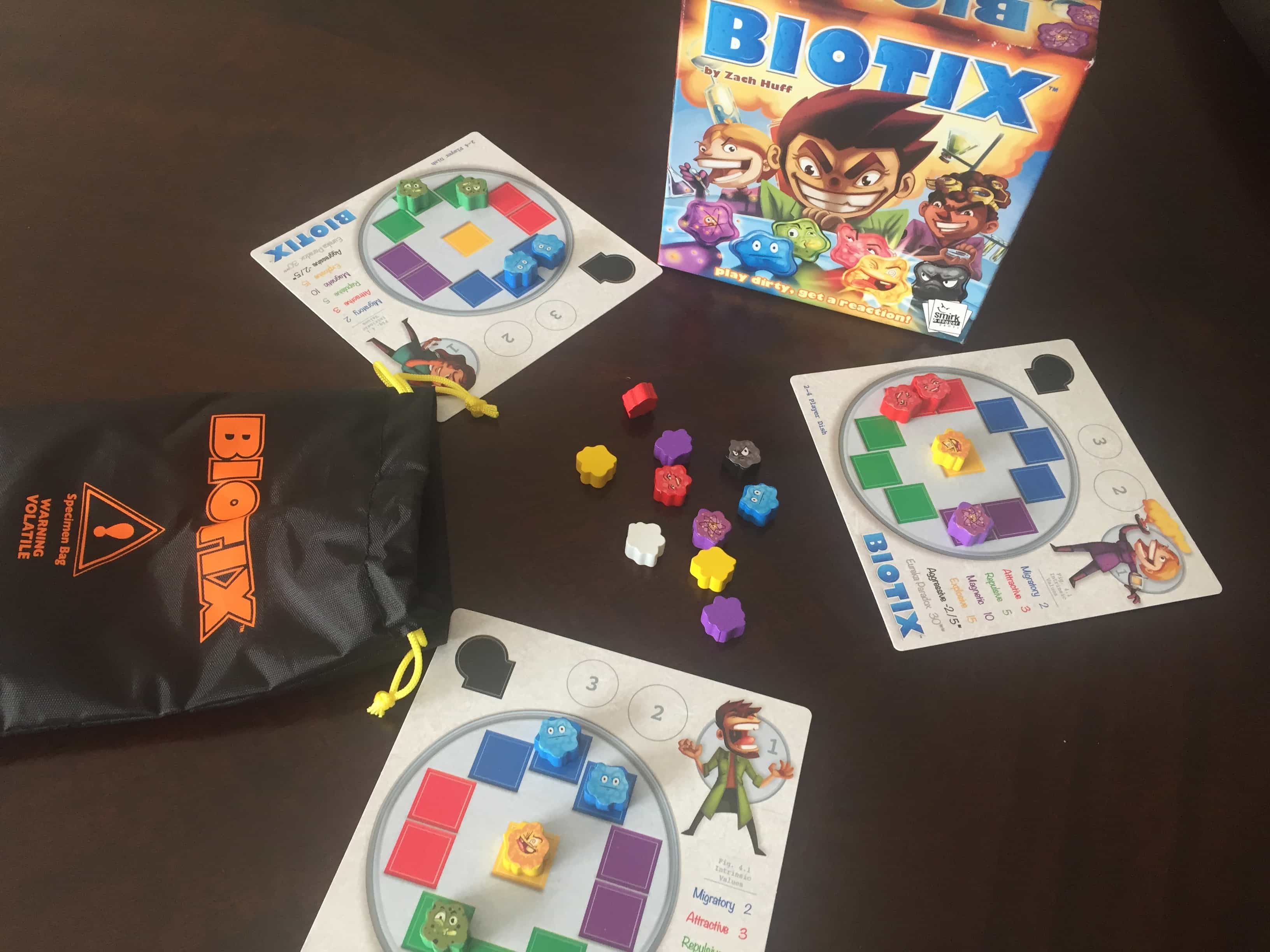
How to play Biotix
In Biotix, you play a lab assistant to a scientist who has invented a valuable, yet volatile set of microorganisms. Each lab assistant is charged with growing the most impressive culture of the organisms as they can. However, you and your fellow scientists want to bump each other off and earn top billing! Therefore, you have two goals – grow your own petri dish full of valuable, point-scoring microorganisms, and also screw up competing scientists as they try to do the same.
Players will start with a small player mat depicting a petri dish with various, color coded slots. On each turn, players will randomly draw two microorganism tokens from a bag, then place those organisms either in their own petri dish or in the petri dish of another player. Organisms in your own dish can score points at the end of the round, depending on what they are.
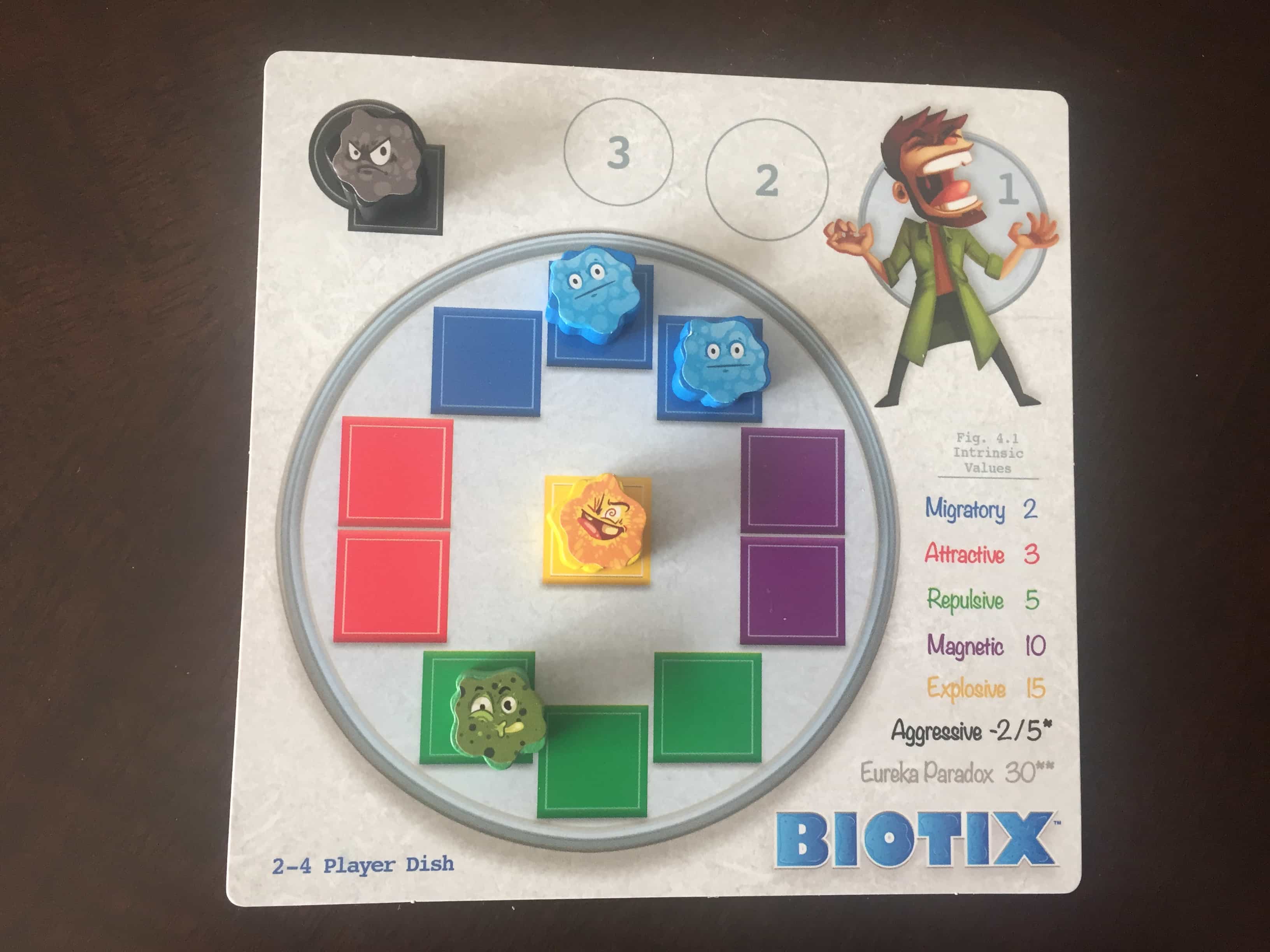
However, if you are full on a certain token and someone makes you go over, the tokens explode! Again, depending on what they are, they can either destroy other tokens on your mat, make you give away tokens, etc. This is where the “take-that” element comes into the game. Each turn, you face a decision: place tokens on your own mat to set up scoring, or put them on someone else’s mat to cause mischief?
After everyone gets three turns, the start player puts a white token into the bag. When anyone draws that white token, the round ends and everyone scores. Hopefully, you have some tokens left and you didn’t get them blown to bits by your competitors!
The game includes an advanced module – a set of black tokens which “infect” your petri dish. They replace your other microorganisms, but they are also worth negative points… unless you have nothing but black tokens. In that case, they are worth 5 points each.
What I liked about Biotix
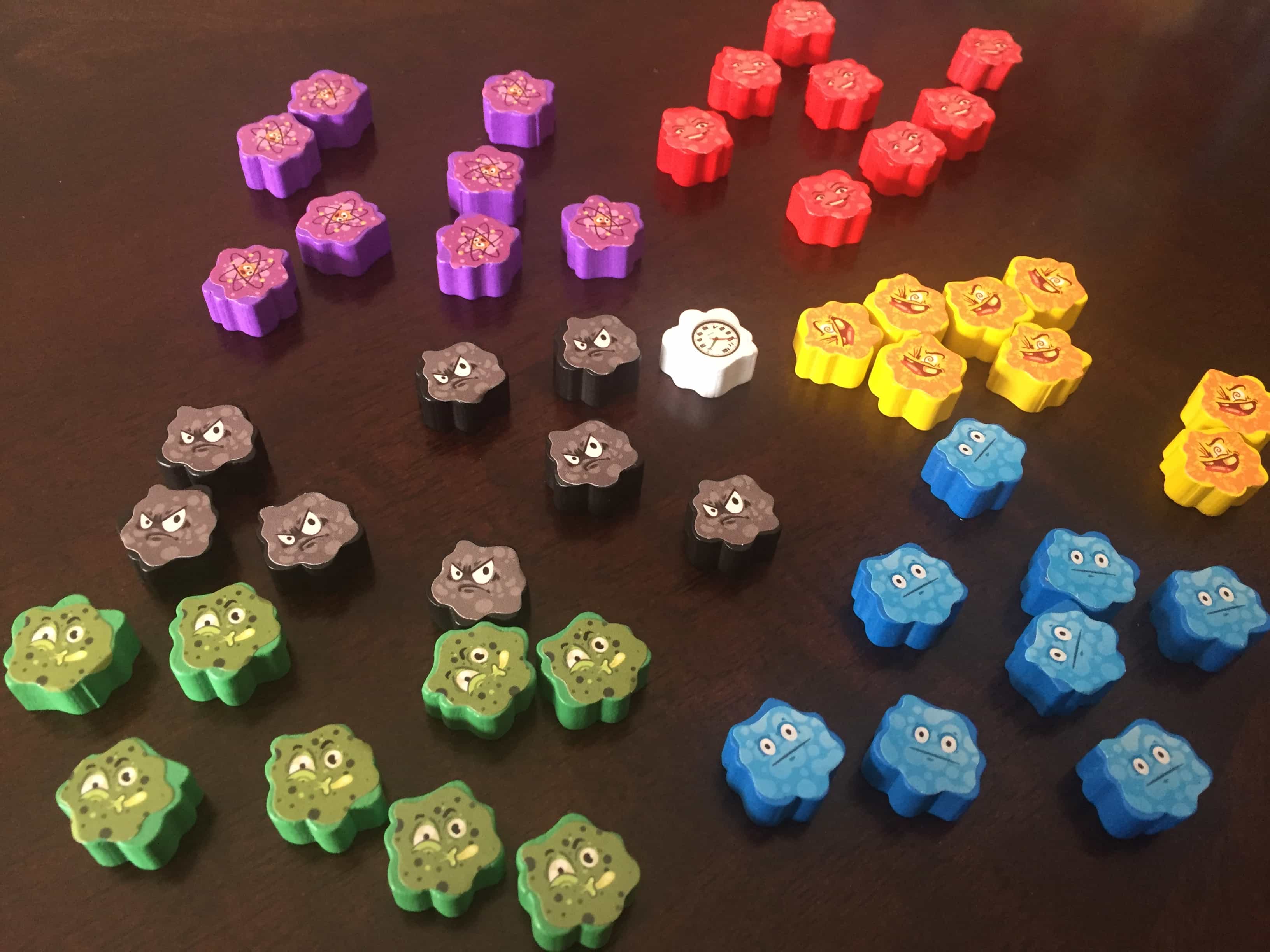
Smirk and Dagger does it again. This time, as opposed to the fun but probably too long Nevermore from a couple of years ago, Biotix clocks in at around 30 minutes or less. It’s a short game that feels even shorter because turns are fun and interesting. Once players get to know what each token does when it explodes, the draw bag flies around the table very quickly.
As player board fill with tokens, the game really starts to hum. I loved that the core dynamic of the game – balancing personal scoring with messing up other’s people’s boards – presents itself on pretty much every turn. The game’s randomness discourages long term strategic thinking, so tactical decisions from turn to turn need to be interesting. Thankfully, they are!
I also really, really liked how the they integrated the game’s timer (the white token) in a way that created turn-by-turn tension after the third round. The game could end right after being put into the bag, or it could last for several additional rounds. Players could, for example, play their turn expecting the game to end at any minute, then remain engaged with each subsequent bag pull, hoping to see the white token. That created some nice tension.
I highly recommend introducing the black tokens in every game, unless everyone else at the table is playing the game for the very first time. Not only do the black tokens represent another form of attack, they introduce a “shoot the moon” aspect that at least one player will go for every turn. Different paths to point scoring and victory are always a good thing.
What I did not like about Biotix
Biotix is clearly a 1 in terms of BGG’s weight scale – super light and easy to play. Because of the short, quick playtime, I hoped to include Biotix in my arsenal of “1” games that I bring to local meetups or parties where adult beverages may or may not be served. Sadly, I don’t think the game will do well in that scenario because Biotix does have a tiny bit of a learning curve. Players need to learn and pay attention to what each microorganism does when it explodes. That’s listed on a separate card and isn’t that hard to remember. However, I found that people who were only half paying attention consistently screwed it up, then subsequently lost interest. You could blame that on the players, for sure. However, I do think there are a small number of games that work in this setting (Incan Gold, for example), so I’m disappointed that Biotix is a bit too complex for that.
I point that out because I don’t think strategic gamers will love this game, either. Biotix is VERY random. You have to go into this knowing that there’s a decent chance you’ll lose, despite your best efforts.
Finally, in every one of my plays of this game, a couple of players shot way ahead in points after the second round while the rest lagged behind. I did not like the game’s catch up mechanism, which I purposely did not describe above. If you are 20 points behind, you can write a color token and a number on a sheet of paper. If you hit that exact count at the end of a round, you score 30 points. I found it a bit half-baked. You might hit your target, but you probably won’t. It’s so easy for other players to mess that up that you might as well not write anything.
Who is this game for?
Despite a few reservations and some slight disappointment that it didn’t work in a true party setting as well as I’d hoped, I personally enjoyed Biotix. As a game night filler game, Biotix does very well. Players had fun with the aggressive play and, because of the short play time, they didn’t take it personally.
Of course, anyone who loves backstabbing and screwing people over in a game should give Biotix a look. However, I’d also recommend it to anyone who doesn’t love that play style, but who wouldn’t mind it in a short, fun burst.
SUMMARY & RESULTS
A light, fun, aggressive-yet-not-too-aggravating filler game that could fit in at many a game night.
7.0
Play

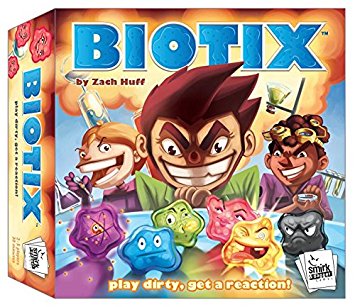



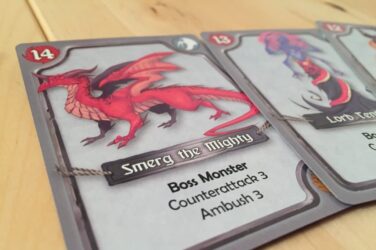


Show Comments